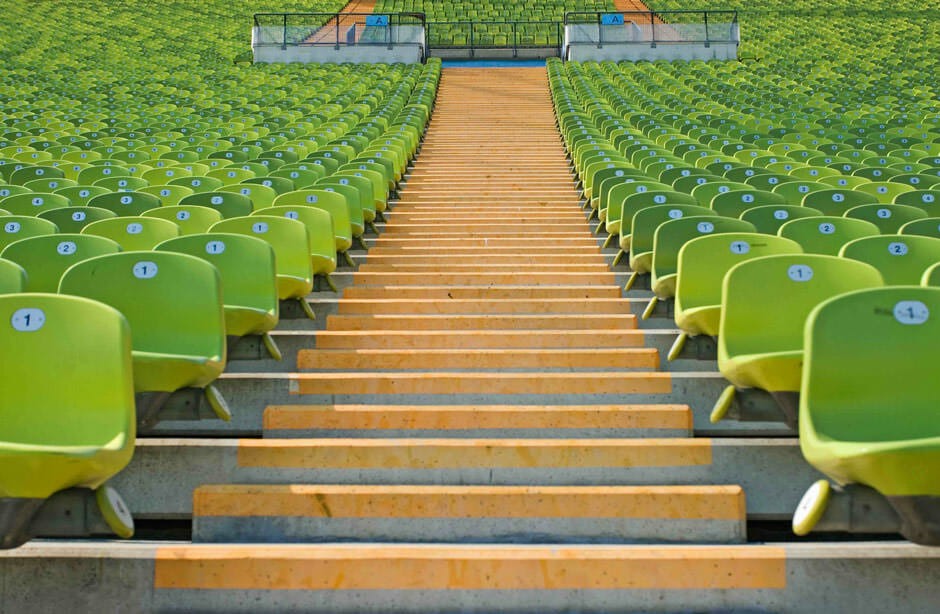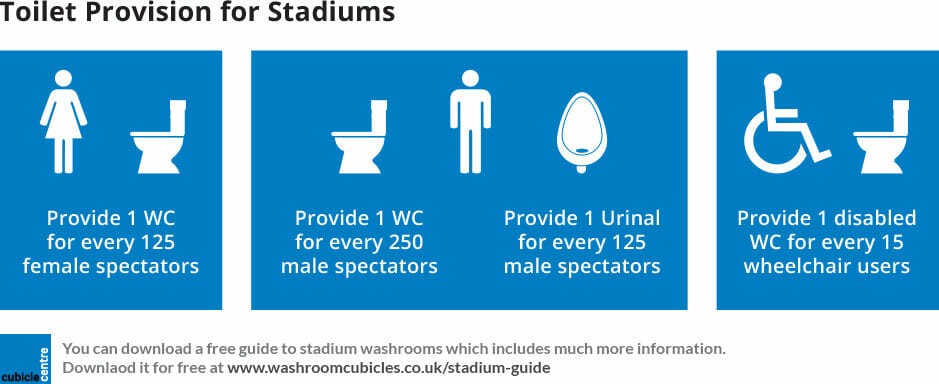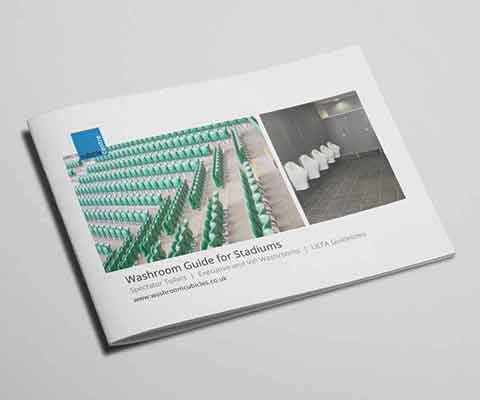
Stadiums play a huge role in entertaining the nation.
The ecstasy of the last minute goal on one side and the numbing disappointment of conceding on the other. Millions watch football matches each week and the world’s biggest stars perform concerts at these venues on a regular basis.
The average attendance of Premier League matches in the 2015/16 season was 36,452. That is a lot of fans using the stadium facilities at half-time. Wembley Stadium knows the importance of washrooms and provides 2,618 toilets.
The UEFA guide to quality stadiums states:
“One of the most important public facilities in a stadium are the toilets.”
So the toilets in stadiums are important. To help stadiums provide excellent facilities, Cubicle Centre created a new guide. We gathered together the best washroom information to help plan a refurbishment.
The guide includes the answers to some of the most common stadium washroom questions.
How many toilets does a stadium need to supply for spectators?
• 1 WC for every 125 female spectators
• 1 WC for every 250 male spectators
• 1 urinal for every 125 male spectators
• 1 wheelchair accessible WC for every 15 wheelchair users

Where should a stadium provide toilet facilities?
Some are obvious: spectator areas, changing rooms, first aid rooms, offices and VIP areas.
Others are less expected: doping control areas, media centres, and in the tunnel access. (In case any players are caught short).
The guide also includes washroom design considerations, cubicle sizes and product recommendations.
You can download the guide for free below.












Connect with Cubicle Centre